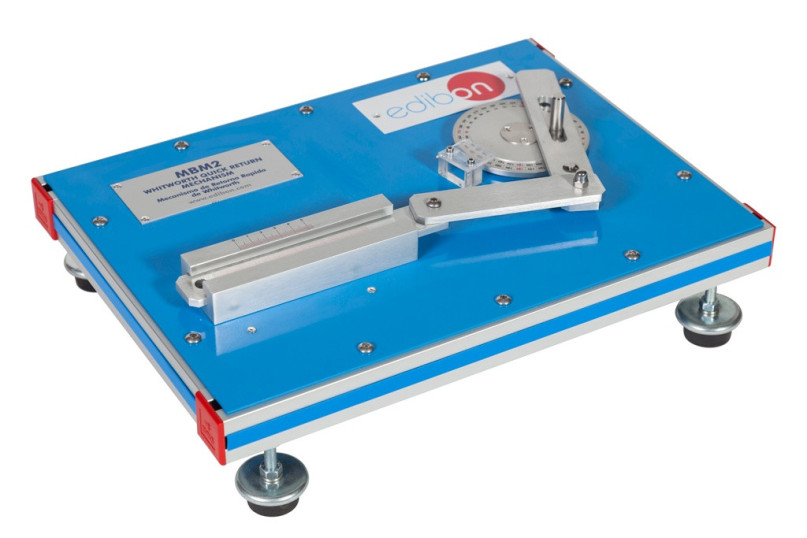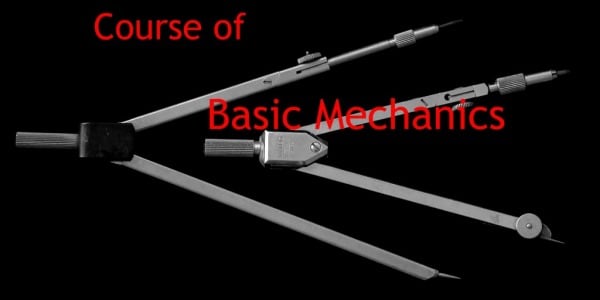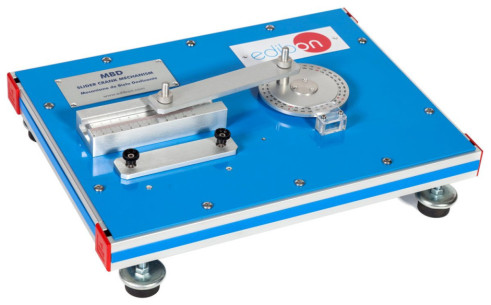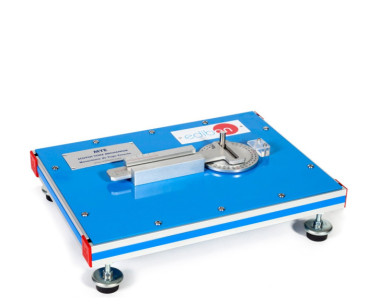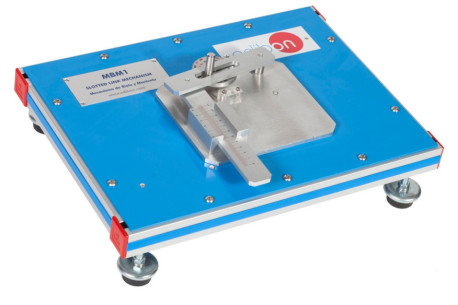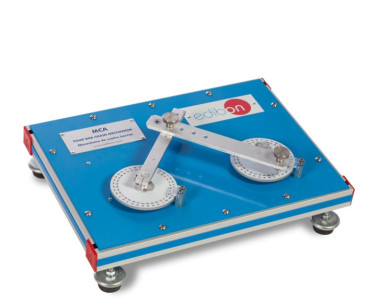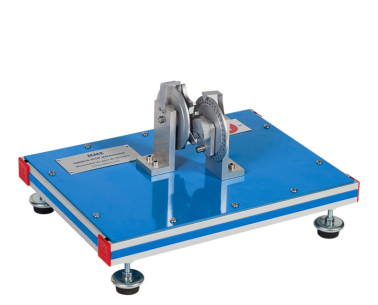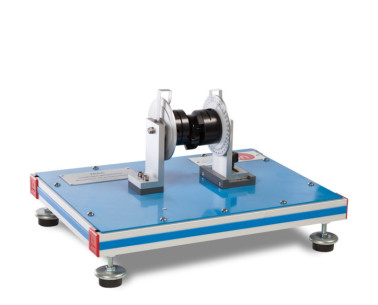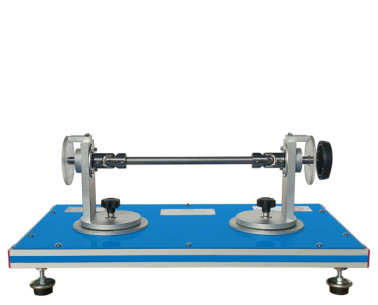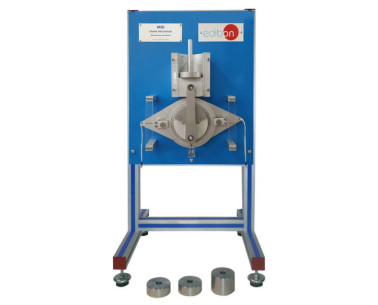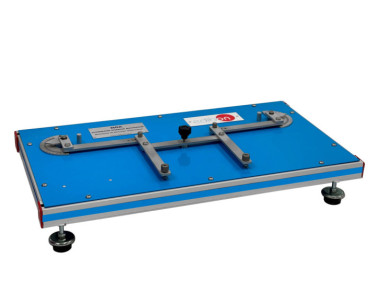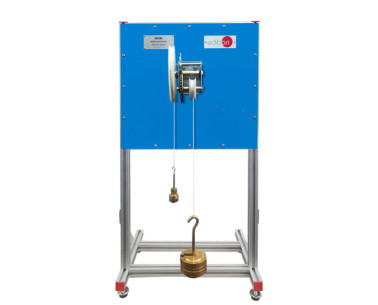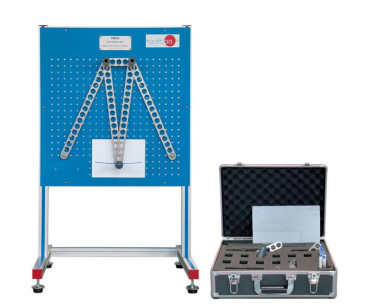MBM2 惠特沃斯快速返回机构
創新系統
The Whitworth Quick Return Mechanism, "MBM2", is a mechanism able to transform circular movement into reciprocating movement.
化验室
相關新聞
一般說明
The Whitworth Quick Return Mechanism, "MBM2", is a mechanism able to transform circular movement into reciprocating movement. It ismade of aluminum and consists of a rotary element, called crank, with a graduated disk, connected to a rigid bar, called connecting rod.
When rotating the crank, the connecting rod moves back and forward. The rotation motion of a crank or crankshaft causes a rectilinear reciprocating motion of a piston or plunger.
The forward reciprocating motion is at a different rate than the backward stroke.
練習和指導練習
手册中包含的指导实践练习
- To demonstrate the action of a simple Whitworth quickreturn mechanism.
- Graphic determination of the relationship between the linear displacement of the connecting rod and the angular displacement of the input crank.
- More exercises and practices may include the determination of the velocity and acceleration of the connecting rod by graphical differentiation and comparison with the values obtained by velocity and acceleration diagrams.
配套设备
苏格兰轭机构
连杆和曲柄机构
四杆机构
日内瓦机构
联轴机构
万向节机构
凸轮-从动件机构
连杆机构
阿克曼转向机构
升降机构
Bar Linkages Unit
質量
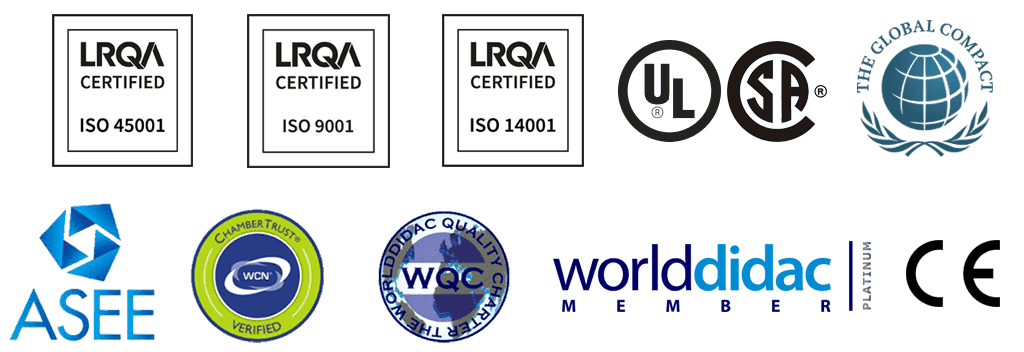
售後服務

 Cookies首选项
Cookies首选项

